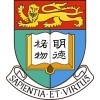
The Effect of Transitional Care Model-Based Interventions for Stroke Patients and Their Caregivers...
StrokeStroke affects both the patient's and the caregiver's whole life by creating permanent damages. Patients and their families need further information and support in the transition from hospital to home. For stroke patients and their families after discharge, transition models can be used to provide continuously and rapidly the service by establishing a communication network between the institutions. In this study, the feasibility and impact of a transitional care model from hospital to home for stroke patients and caregivers will be tested. The purpose of the project is to assess the effect of Transitional Care Model (TCM)-based interventions for stroke patients and their caregivers on caregivers' competence, in increasing their readiness to care and electronic health literacy, in reducing their burnout, and on patient results. Types of interventions that are applied to stroke patients and caregivers based on Transitional Care Model are hospital interview, home visit, telephone interview and web-based training. As stated in TCM, the intervention was planned to be performed three months after discharge. Multiple interventions including at least three face-to-face interviews at the hospital, distance education via Web and telephone communication for three months, and one home visit within seven days after discharge will be performed in order to increase health literacy levels and caregiving competence of the caregivers and to reduce burnout. In pre-tests and post-tests to be applied to the caregivers, the effectiveness of the support programs provided will be assessed quantitatively by the electronic health literacy, caregiving competence, and burnout scales. The satisfaction with the intervention will be evaluated qualitatively. Rate of return to the hospital, risk of pressure sore, and time of access to home health services will be assessed in stroke patients. As a result of web-based distance education, home visit, telephone communication service and informing at the hospital, caregivers of stroke patients will begin to receive information about what patients experience during their treatment and about all what patients need after treatment. The website to be prepared for caregivers of stroke patients will be put into service also for the control group upon completion of the data collection of the intervention group and the website will also continue to be used after the project is completed.

Effects of Phototherapy on Gait and Balance of Post-stroke Individuals
Post-stroke in Association to PhototherapyHemiparesis and/or hemiplegia is one of the most common clinical signs of stroke, characterized by partial or complete loss of motor function, resulting in varying degrees of impairment and disability. The aim of this study is evaluate the acute effects of application of phototherapy to detect if this therapeutic approach may be beneficial in gait and balance post-stroke individuals. For such, 10 volunteers, with a history of injury (stroke) between 6 months to 5 years, with deficit in functional capacity in the gait due spasticity of extensor muscles of the affected limb, specifically the Triceps Sural. The evaluation will consist of three-dimensional gait analysis, muscle activity during gait, mobility, static and functional balance, and mobility of volunteers.

The Effect of Instant Message Intervention for Psychological Well-being Among Stroke Survivors
StrokeDepressive Symptoms1 moreThe proposed pilot trial aims to evaluate the feasibility of iCBT based EMI, which is a real-time, real-world, personalised and cost-effective approach, for stroke survivors' psychological well-being.

Tele BCI-FES for Upper -Limb Stoke Rehabilitation
StrokeThe study aims to identify whether stroke survivors can intentionally modulate their brain signals for controlling an FES device to produce arm movements for home based rehabilitation. The study also assess the participants acceptability of this new home-based rehabilitation.

Behavioral Economics and Mobility After Stroke (BE Mobile)
StrokeIn this pilot, randomized controlled trial, the investigators will compare the preliminary effectiveness of a gamification with social incentives 8 week intervention to increase physical activity for adults with stroke.

Acupressure in Acute Stroke Patients
Nursing CariesAim: To examine the effect of acupressure application on physiological parameters, anxiety and sleep quality in patients with acute stroke. Method: Randomized controlled trial will be carried out in the stroke patients in Turkey. The research will include two groups, an intervention (n=32) and a placebo (n=32). Since the critical period in the care of the patient who had an acute stroke is the first 72 hours; An application and evaluation will be made every 12 hours after the first application. In other words, a person will be given 2 applications a day with an interval of 12 hours and a total of 6 applications within 72 hours. Depending on the number of points selected and the duration of the print on each point; the session duration of an individual will be approximately 25 minutes. Physiological measurements will be made before and after the acupressure application. Physiological measurements 10-15 min. From acupressure application. will be taken before and the same measurements after acupressure 20-30. Will be taken again in the min interval. Application to acupressure points in a certain order; Baihui (GV20), Susanli (ST36), Hegu (LI4), Shenmen (HT 7) and Quchi (LI11) will be held. The application steps of the placebo group will be the same as the acupressure application steps. Unlike acupressure, it will be waited for 2 minutes only in contact with the thumb, without any pressure or scrub on the bone protrusions, away from the real acupressure points, where the meridian does not pass and there are no active points. To reduce the electrical effect of the touch, gloves will be worn only in contact.

Effects of Soft Robotic Exosuit on Exercise Capacity, Biomakers of Neuroplasticity, and Motor Learning...
StrokeHigh intensity exercise is known to improve a person's ability to learn new motor skills. The goal of this project is to evaluate if a robotic exosuit can help people who have had a stroke perform walking rehabilitation at higher intensities than they are able to without the exosuit. The investigators will measure exercise training intensity, biomarkers of neuroplasticity (e.g., brain-derived neurotrophic factor; BDNF), and motor learning when people poststroke exercise with and without the exosuit. For this protocol, exosuits developed in collaboration with ReWalk™ Robotics will be used. Aim 1: Determine the effects of a soft robotic exosuit on gait training intensity and serum BDNF in persons post-stroke completing a single bout of high intensity walking. Hypothesis 1: Exosuits will allow individuals post-stroke to (i) walk at higher intensities or (ii) walk at a high intensity for longer durations. Hypothesis 2: Training at a higher intensity, or training at high intensity for longer durations, will result in increased serum BDNF. Aim 2: Determine the effects of a soft robotic exosuit on gait biomechanics measured after a single bout of high intensity walking with versus without a soft robotic exosuit. Hypothesis 3: A single bout of high intensity walking with an exosuit will lead to demonstrably better gait biomechanics than a single bout of high intensity exercise without an exosuit.

Improving Resilience and Quality of Life of Stroke Patients
Stroke PatientCaregiverThis study aims to (1) test the effect of Family System Care and Theme Care Action Module on resilience, family function, self-efficacy, and quality of life for stroke patients and their families and caregivers; and (2) interview stroke survivors (experimental group) using a semi-structured questionnaire to achieve a mix of qualitative and quantitative methodologies.

Evaluation of a CarePartner-Integrated Telehealth Rehabilitation Program for Persons With Stroke...
StrokeThe objective of this study is to identify the potential benefits of a home-based, intervention designed to facilitate carepartners' roles in stroke survivor rehabilitation. Stroke survivors and caregivers will participate in pairs. Stroke survivors will receive constraint induced movement therapy (CIMT). Caregivers of stroke survivors will be randomized to traditional caregiver education or a web based intervention for the duration of stroke survivor therapy. By learning the best way to involve family members in therapy, investigators hope to decrease the harmful effects of stroke.

Links Between Depression, Anxiety, Coping and Quality of Life After a Stroke
Cerebral StrokeIntroduction and literature review With 130 000 cases per year in France in 2010, stroke is one of the most common neurological diseases, often leaving many disabling sequelae physical and cognitive levels (currently live 500 000 disabled following a stroke) and leading and a loss of significant autonomy in these patients. However, many stroke survivors soon find a range comparable to their previous state. Investigators can then ask ourselves about the impact of this life event in these people who apparently do not show visible effects: what about the psychological repercussions of stroke in these patients healthy; what is changed in their daily lives, particularly in their mental functioning after this brutal confrontation with their own mortality? Objectives Our project aims to better understand the psychological repercussions of stroke in patients who quickly find a health and autonomy comparable to their previous state. The objective will be to investigate the relationship between depressive symptoms and anxiety, coping strategies and quality of life from the acute phase and during the first months after the onset of stroke. This period is particularly demanding for these patients must therefore adapt and readjust continuously: shock stroke, hospitalization in several services (intensive care, neurology, rehabilitation), back home, "new" life with the changes related stroke, resumption of a professional activity, etc ... Our methodology will combine tools conventionally used (standardized interview, validated questionnaires) to newer, ecological and true methods (Experience Sampling Method applied by the use of a smarphone application) to assess different variables studied. This initially be determined whether the various symptoms of the depression on the one hand and anxiety on the other hand, depending on their mode of expression (vs. outsourced internalized; ie emotional, cognitive, somatic), observed from the acute phase of stroke, are related and predict the quality of life, depression and anxiety in the longer term (four months after the stroke). Furthermore, our study will observe if the individual coping strategies (coping) daily and evolution influence the psychological status and quality of life during the months following the stroke.
